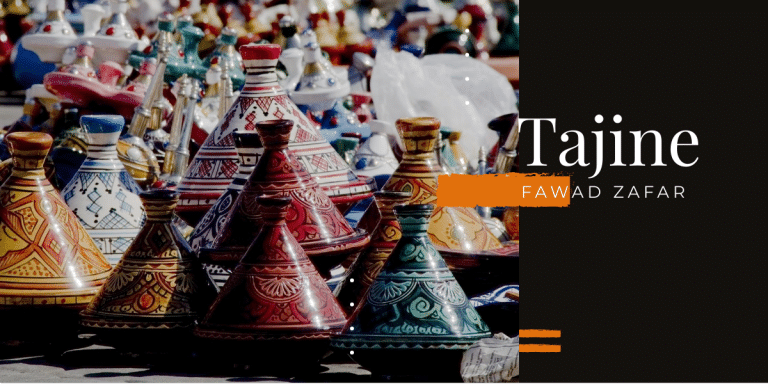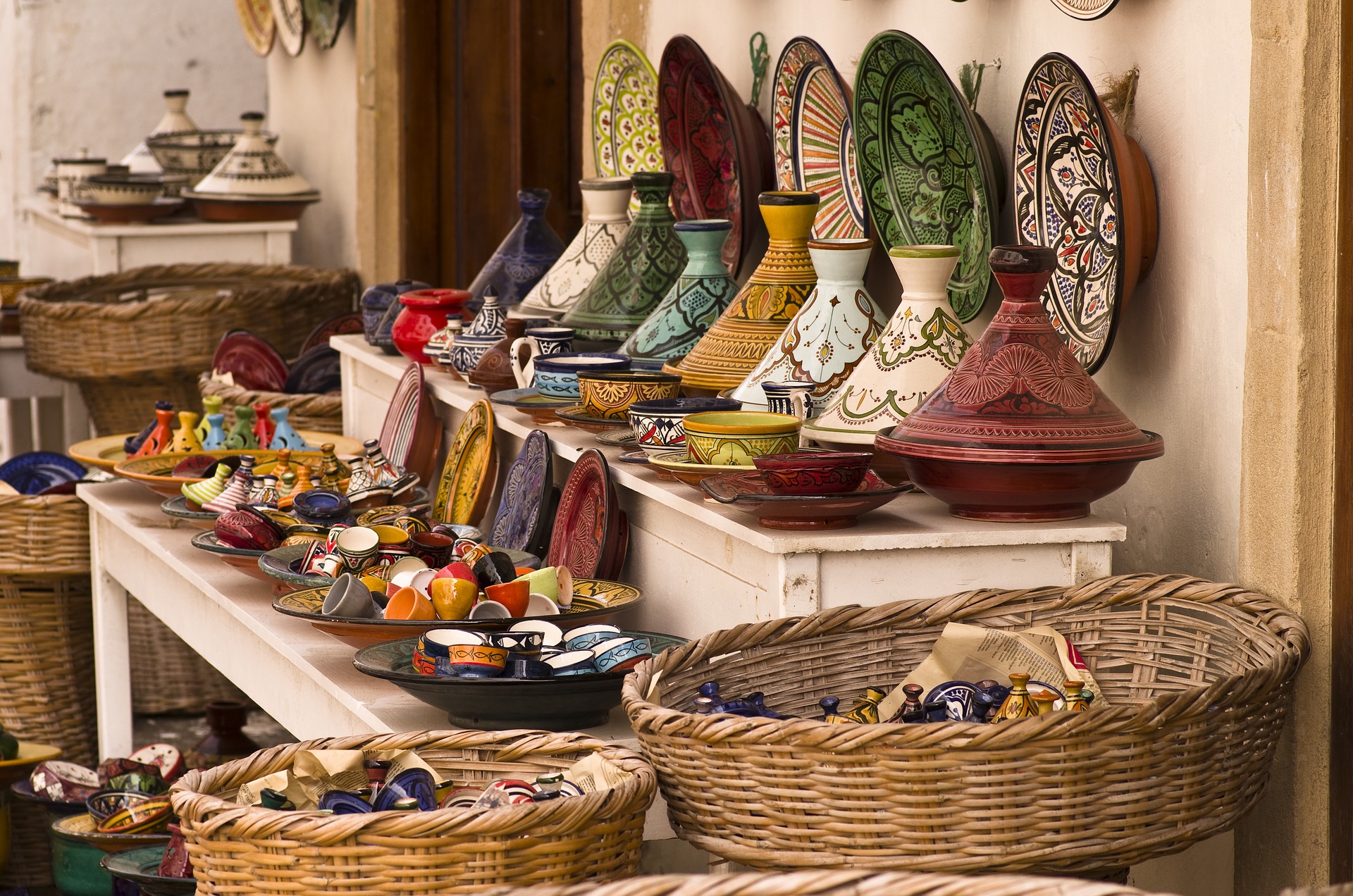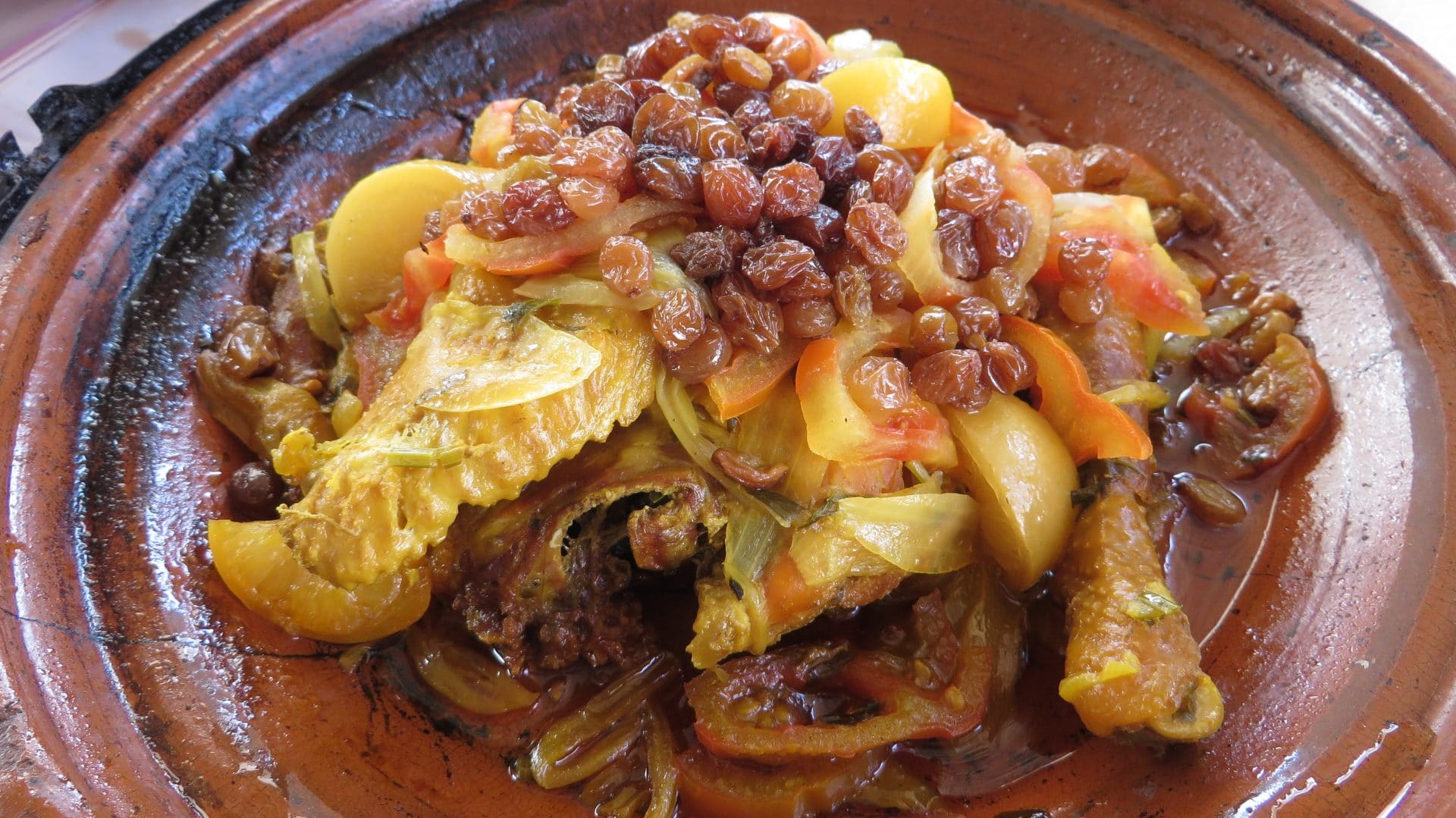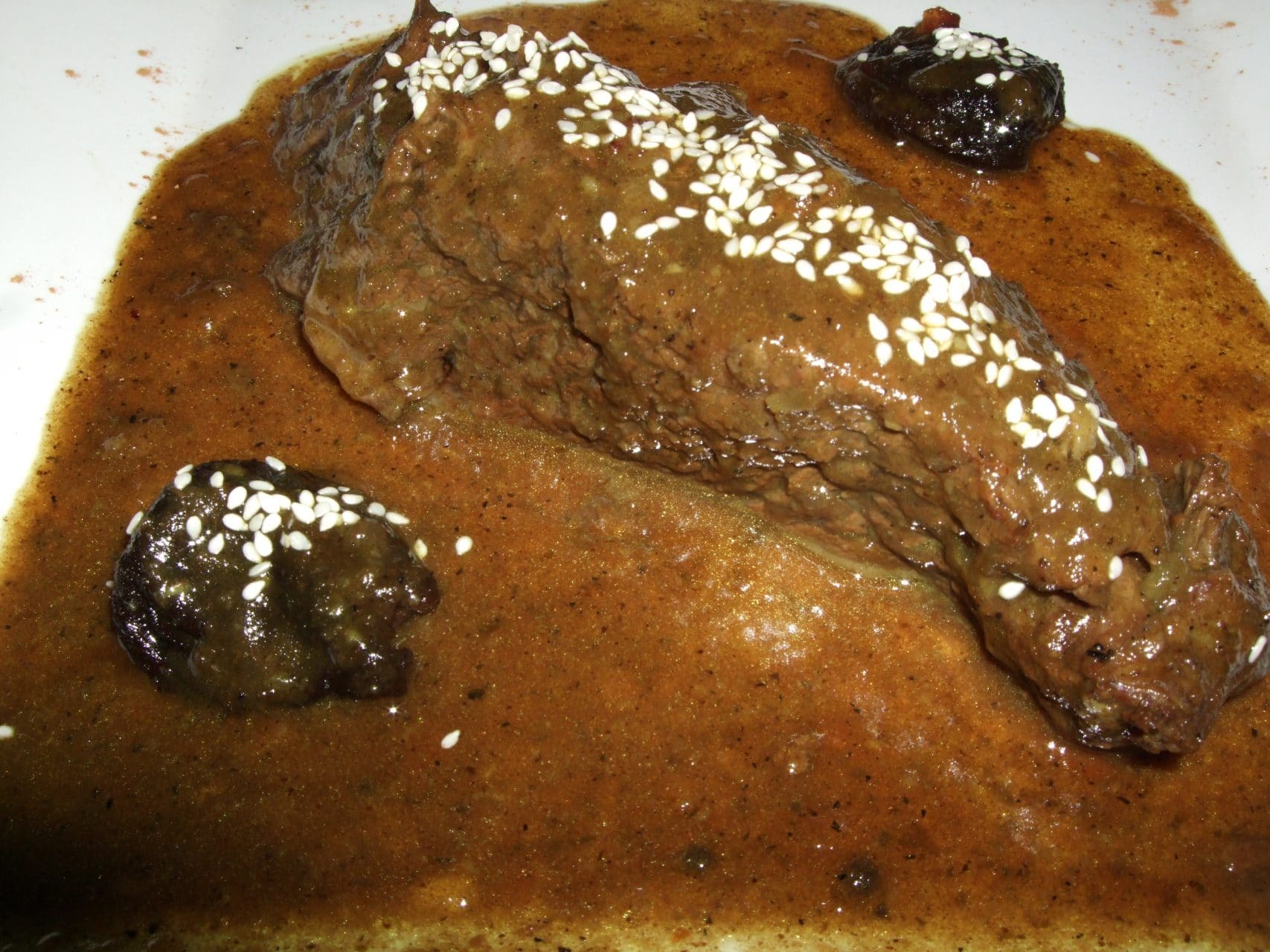
Tajine, also called tagine, refers both to the rich Moroccan stews and the cooking vessel used to make them. When referring to the cooking vessel, it is round and shallow, dirt or clay meal with a tall, pointy, conical cover.

A similar lid fits into the base, so the steam gathers on its inside and drops again into the stew with no misuse of flavors and moisture. The pots are perfect for moderate cooking over ashes or on a stove, bringing about rich, delicate vegetables and meat that falls off the bone.
Tajines can be coated or uncoated. The uncoated ones are earthier and get darken after some time, while the coated ones are suggested for individuals who cook rarely. There are additionally serving tajines, which are generally finished and lighter than the different tajines, however, they’re not resistant to warm of the heat.
In the zone of Rif Mountains, there’s tagra, an unglazed tajine with little clay handles and without a cover. A Berber tajine is known as chalhaoui, and it has an adjusted, dome-shaped lid rather than the funnel-shaped one. Tajines show Moroccan cooking’s partiality for joining various surfaces and blending flavors, for example, a well-adjusted mix of savory and sweet, chicken with tomato and almonds, and veal cuts with stewed, cut pears.
Baby artichokes, spring peas, and different nuts, for example, almonds or pistachios are a typical fixing in tajines. These dishes are frequently joined by couscous, steamed rice, hot bread, and the assortments are limitless.
From fish tajines with mussels and tomato sauce, to sheep tajines with vegetables, for example, carrots, onions, potatoes, and olives, natural products, for example, raisins and apricots, and heaps of flavors, for example, red pepper, cumin, saffron, and turmeric, tajines are a national dish loaded with inventiveness and flavor.
Different varieties of Tajine are,
Chicken Tajine:

As the name proposes, the primary fixing in this traditional Moroccan dish is chicken, ideally bone-in chicken cuts, for example, thighs, legs or drumsticks. Like other tajine dishes, this chicken assortment is additionally arranged in the eponymous funnel-shaped cooking vessel.
The meat is flawlessly organized with different vegetables, for example, onions, tomatoes, carrots, potatoes, and the entire dish is typically prepared with saffron, cumin, parsley, or coriander. Regular varieties may incorporate lemons, olives, almonds, or apricots.
Chicken tajine is typically presented with bread, which is put on the side.
Different ingredients used in Chicken Tajine are cumin, cilantro, almonds, saffron, olives, dried apricots, potatoes, onions, carrots, and chicken pieces.
Mrouzia:

Mrouzia is one of the most adored sweet and appetizing Moroccan dishes, comprising of a tagine with lamb, almonds, honey, raisins, and ras el hanout flavors. The dish is generally held for celebrations, festivities, occasions, and comparable huge social events.
This tagine is one of the most prominent dishes during the Muslim celebration of Eid al-Adha. It is recommended to decorate the dish with a sprinkling of sesame seeds.
Different ingredients used in Mrouzia are ras el hanout spices, sesame seeds, raisins, honey, almonds, and lamb.
Tajine Zitoune:
Tajine Zitoune is a conventional Algerian dish made with a mix of chicken pieces, onions, olives, carrots, mushrooms, bay leaves, lemon juice, and saffron or turmeric. The olives are whitened and dried, while simultaneously, the chicken is cooked with onions and flavors.
The meat is cooked in water with vegetables, mushrooms, and olives, and the combination is stewed until delicate. Close to the finish of cooking, flour and lemon juice are blended in and poured over the chicken. The dish is typically cooked in a tagine, and it is recommended to embellish it with cilantro and serve it hot with saffron rice.
Different ingredients used in Tajine Zitoune are cilantro, lemon juice, bay leaves, saffron, thyme, onions, mushrooms, olives, carrots, and chicken pieces.